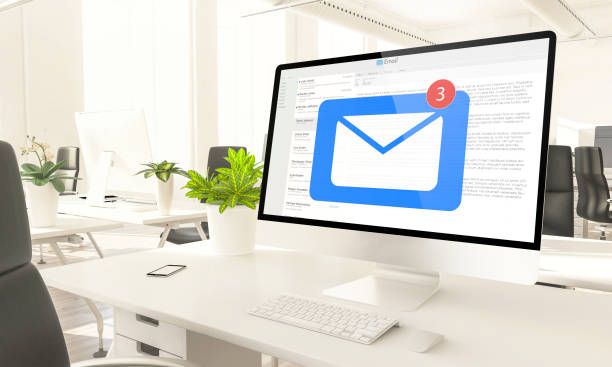Welcome to our comprehensive guide on email bounce definition and how to effectively handle bounced emails. As an expert in the field, I will provide you with valuable insights to enhance your understanding of bounced emails and equip you with practical solutions to improve your email deliverability. In today's digital world, where email marketing plays a vital role in business communication, it's crucial to address email bounces proactively. In this article, we will delve into the concept of email bounces, explore their causes, discuss different types of bounces, and provide effective strategies to resolve and prevent them.
What is an Email Bounce?

An email bounce occurs when an email fails to reach its intended recipient's inbox and is returned to the sender. Bounced emails can be classified into two main types: hard bounces and soft bounces. Understanding the difference between these two types is essential for effectively managing your email deliverability.
Hard Bounces
Hard bounces are permanent delivery failures. They occur when an email cannot be delivered due to reasons such as an invalid or non-existent email address, a blocked domain, or a blocked IP address. Hard bounces are typically caused by factors that prevent email delivery to a specific recipient permanently. It's important to remove hard bounced email addresses from your subscriber list to maintain a healthy email reputation and improve your deliverability.
Soft Bounces
Soft bounces, on the other hand, are temporary delivery failures. They occur when an email cannot be delivered temporarily due to reasons like a full mailbox, a server issue, or a message size limit. Soft bounces indicate a temporary problem that may resolve itself, allowing the email to be delivered successfully on subsequent attempts. However, if soft bounces persist, they may turn into hard bounces, and appropriate action should be taken to rectify the issue.
Causes of Email Bounces

Now let's explore some common causes of email bounces:
1. Invalid or Non-Existent Email Addresses
One of the primary reasons for email bounces is sending messages to invalid or non-existent email addresses. This can happen when an email address is mistyped, no longer in use, or has been deactivated. Keeping your email list clean and regularly removing invalid email addresses is crucial to minimizing hard bounces and improving your deliverability.
2. Email Server Issues
Temporary issues with the recipient's email server, such as a full mailbox or a server overload, can result in soft bounces. These issues usually resolve themselves, and the email will be delivered successfully on subsequent attempts. However, if soft bounces persist with a particular recipient, it's advisable to investigate the issue further or reach out to the recipient to ensure the problem is resolved.
3. Email Content Triggers Spam Filters
If your email content triggers spam filters, it may result in bounces. Spam filters analyze various factors, including subject lines, email content, attachments, and sender reputation, to determine whether an email should be delivered to the inbox or flagged as spam. To avoid triggering spam filters, ensure your emails comply with best practices, such as using a reputable email service provider, personalizing emails, and avoiding excessive use of promotional language or spammy keywords.
4. IP or Domain Reputation Issues
Issues with your IP or domain reputation can lead to bounces. If your IP address or domain has been flagged as spammy or associated with suspicious activities, it can result in emails being blocked or filtered out. Monitoring your IP and domain reputation, practicing good email hygiene, and implementing authentication methods like SPF, DKIM, and DMARC can help maintain a positive sender reputation and reduce bounces.

Resolving and Preventing Email Bounces

Now that we understand the causes of email bounces, let's discuss effective strategies to resolve and prevent them:
1. Maintain a Clean Email List
Regularly clean your email list by removing invalid, inactive, and bounced email addresses. Use email verification tools or employ a double opt-in process to ensure the accuracy of email addresses in your list. By maintaining a clean list, you reduce the chances of sending emails to non-existent addresses and minimize hard bounces.

2. Implement Email Authentication

Implement email authentication protocols such as SPF (Sender Policy Framework), DKIM (DomainKeys Identified Mail), and DMARC (Domain-based Message Authentication, Reporting, and Conformance). These protocols help verify the authenticity and integrity of your emails, improve your sender reputation, and reduce the likelihood of your emails being marked as spam.
3. Monitor and Improve Sender Reputation
Monitor your sender reputation regularly using reputation monitoring tools or services. A good sender reputation is crucial for email deliverability. If you notice a decline in your reputation, take immediate action to identify and rectify the issue. Maintain consistent engagement with your subscribers, avoid sending excessive emails, and promptly address any complaints or spam reports.
4. Segment Your Email List
Segmenting your email list allows you to send targeted and relevant content to specific subscriber groups. By tailoring your emails to the interests and preferences of each segment, you increase engagement and reduce the chances of triggering spam filters. Segmentation also helps you identify and address deliverability issues with specific segments, allowing you to take targeted actions to improve their engagement and prevent bounces.
Frequently Asked Questions
1. How can I identify bounced emails?
You can identify bounced emails by monitoring your email delivery reports or using email service providers that offer bounce tracking and reporting features. These reports will provide you with detailed information about the emails that bounced, including the type of bounce (hard or soft), the reason for the bounce, and the email addresses that bounced.
2. Should I attempt to resend bounced emails?
For hard bounces, it's not recommended to resend emails to the same addresses as they are permanent delivery failures. Instead, focus on removing hard bounced email addresses from your list. For soft bounces, you can attempt to resend the email after a certain period, considering the temporary nature of the issue. However, if soft bounces persist, it's advisable to investigate the underlying cause or reach out to the recipient directly.
3. How can I prevent my emails from bouncing?
To prevent your emails from bouncing, maintain a clean email list, implement email authentication protocols, monitor and improve your sender reputation, segment your email list, and adhere to best practices for email content. Regularly monitor your email delivery reports and take prompt action to address any issues or patterns of bounces.
Conclusion
Understanding email bounce definition and implementing effective strategies to handle bounced emails is crucial for maximizing your email deliverability. By differentiating between hard and soft bounces, identifying the causes of bounces, and employing proactive measures to resolve and prevent them, you can ensure your email marketing campaigns reach their intended recipients successfully. Keep your email list clean, focus on maintaining a positive sender reputation, and implement email authentication protocols to optimize your email deliverability and achieve better results from your email marketing efforts.

